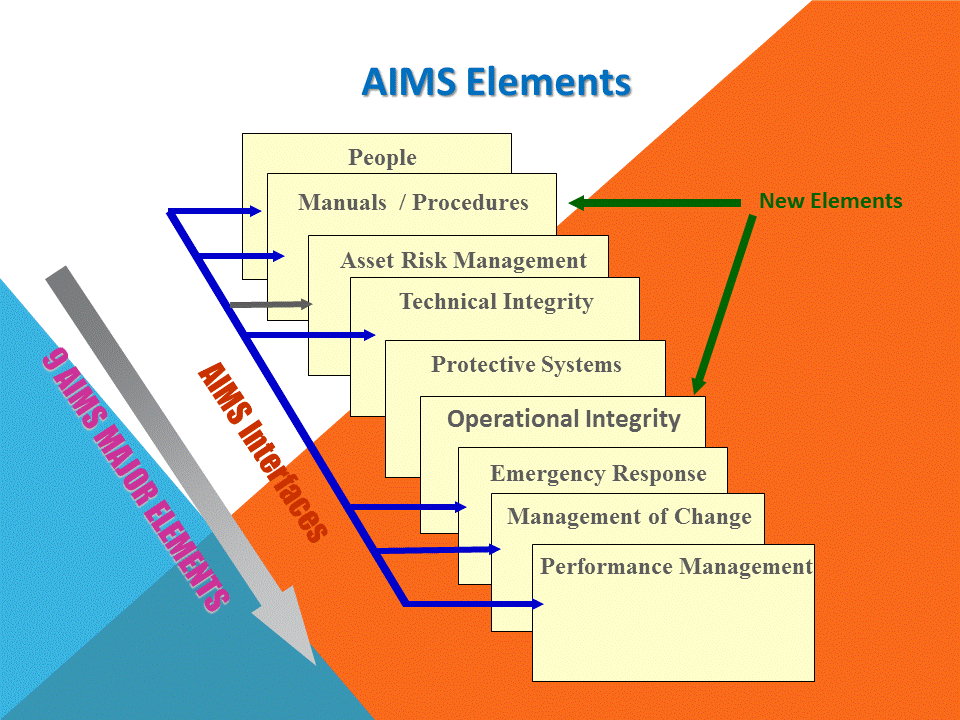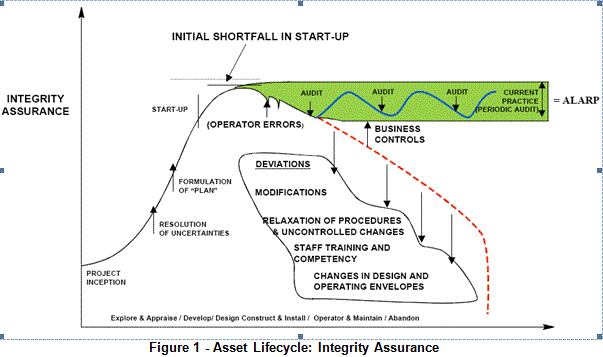ASSET INTEGRITY MANAGEMENT (AIM)
To enable our Clients to sustain the integrity of Critical Assets , we offer the the Interity management model , which comprises of the following elements:
-
Integrity Management Framework
-
People competency and behaviour
-
Practices and Procedures
-
Risk Evaluation and Management
-
Technical Integrity
-
Operational Integrity
-
Protective Systems and SCE
-
Emergency Response
-
Management of Change
-
Performance Management
The Case for Management of Integrity
The need to assure integrity over the life cycle of an asset, from its initial inception to its final abandonment, is one of the key factors to control the business risks
associated with loss of integrity. Figure 1 below illustrates the influence over the life cycle.
From inception there is a need to define both the assets’ criticality and the risks associated with managing its integrity, and then identify anomalies, establish trends and manage changes to establish the necessary controls to mitigate these risks. This process is the Asset Integrity Management System.
Any relaxation of control at any stage during the lifecycle of an asset will result in the risk moving out of the ALARP zone and a potential for failure. Depending on the criticality of the asset, this may result in a major accident or catastrophic impact on the company’s business.

